
Joe Hermolin worked at the University of Wisconsin-Madison for many years in the Department of Biomolecular Chemistry in the Medical School. In retirement he moved to rural Langlade County and developed an interest in the region’s history. He currently serves as president of the Langlade County Historical Society. His primary interest is archiving the museum’s photograph and document collection and making it available online.
By This Author:
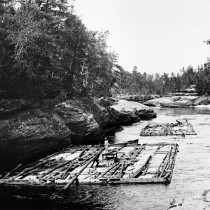
The Lumber Industry in Northern Wisconsin
Today, the timber industry is still a major part of the economy of Langlade County and Wisconsin. Department of Natural Resources statistics show that lumber generates 422 jobs in Langlade County with 495 indirect jobs and an economic impact of close to $65 million annually. State-wide, forest products create almost 60,000 jobs with an economic impact of close to $23 billion.
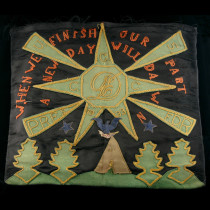
OBJECT HISTORY: CCC Pillow Sham
Created in 1933, this commemorative pillow sham was just one of a number of textiles created by second-generation Hungarian immigrant Rose Mary Drab to honor her brother Edward’s service in the Civilian Conservation Corps (CCC).
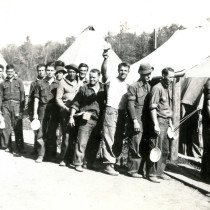
The Civilian Conservation Corps
In 1933, with nearly a quarter of the civilian labor force unemployed, newly inaugurated President Franklin Delano Roosevelt initiated the Civilian Conservation Corps (CCC), a cornerstone effort in his New Deal program.
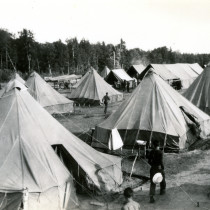
Daily Life in the Civilian Conservation Corps
Camp 657 in Elcho was typical of CCC camps across the country in that it contained five barracks housing about 40 enrollees each. Camps also included a mess hall, canteen, educational building with a library, shops, hospital, headquarters, and supply buildings. A typical day began with reveille and flag-raising at 6:00am.
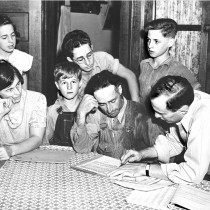
The Great Depression in Langlade County
While local governments across the United States struggled to deal with the sharp economic downturn in the first years of the 1930s, Langlade County initially found itself in an enviable position at the onset of the Great Depression.
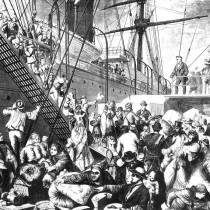
An Immigrant Family in Rural Wisconsin
Immigrant families like the Drabs came to Wisconsin after hearing tales about the state’s fertile land and boundless opportunities. It’s possible that the Drab family, in particular, were drawn to the area thanks to the efforts of a Bohemian immigrant named Joseph Duchac. As a surveyor and land speculator, Duchac often traveled to Chicago to promote Langlade County to newly arrived immigrants like the Drabs who were eager to get out of the city and take up farming.
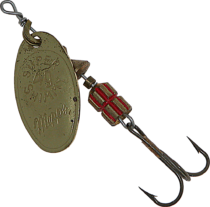
OBJECT HISTORY: Mepps Fishing Lure
The classic Mepps fishing lure, the Aglia, was invented in France in the 1930s and patented in 1938. It was introduced to northern Wisconsin, and to the U.S., by a G.I. returning from France.
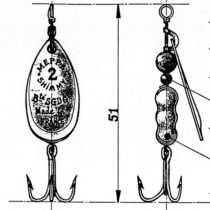
Mepps Lures: The Antigo Connection
A chance encounter of an American G.I. in France after World War II with a local fisherman led to the development of a major industry in Antigo, Wisconsin and put Antigo on the sports fishing map.
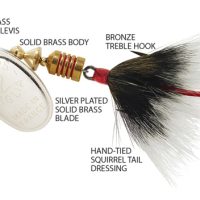
Squirrel Tails Wanted? The Improved Mepps Lure
Driving through Antigo, visitors are often puzzled by a sign proclaiming “Squirrel Tails Wanted” advertised by Sheldons’ Inc., manufacturer of Mepps lures. Squirrel tail hair has unique properties ideal for lures. Its addition to the Anglia has proven to be the most successful improvement to the classic spinner invented in France in 1938.
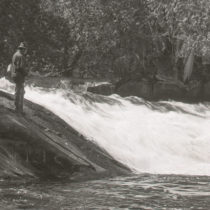
The Wolf River
Todd Sheldon first discovered the virtues of the Mepps Aglia spinner and later realized improvements afforded by a tuft of squirrel tail while fishing at one of his favorite spots: the Wolf River. Today the Wolf continues to be a destination for sports fishermen and paddlers. Along with the St. Croix, the 225 mile Wolf River is one of two National Scenic Rivers in Wisconsin.
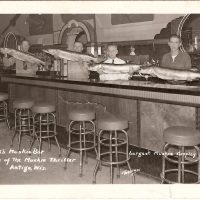
Building a Tourism Industry in Northern Wisconsin
Equipment manufacturers played a major role in developing fishing as a part of the tourism industry in northern Wisconsin. Each year nearly two million people fish in Wisconsin’s waterways. They catch about 72 million fish of various species.
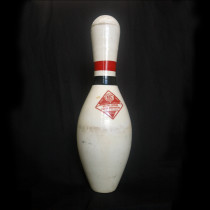
OBJECT HISTORY: Vulcan Bowling Pin
This bowling pin was produced by the Vulcan Corporation in Antigo, Wisconsin, sometime in the late 1950s after Vulcan had introduced its patented “Nyl-Tuf Supreme” plastic coating (as indicated by the pin’s red label).
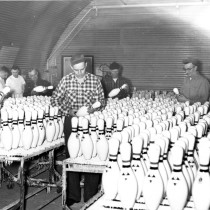
The Vulcan Corporation
The Vulcan Corporation was founded in 1909 in Ohio as a manufacturer of wooden shoe lasts. In 1919, Vulcan started a plant in Crandon, Wisconsin, which made “rough-turned”—or unfinished—lasts. In 1925, the Crandon plant was moved to Antigo because of the region’s lumber industry and the better rail service there that made shipping much easier.
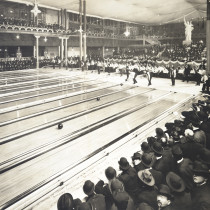
Milwaukee: The Bowling Capital of America
Bowling evolved in the mid-nineteenth century United States from imported European games like the German kegling. Beginning with clubs in eastern U.S cities, bowling grew in popularity and spread to the Midwest—particularly cities like Milwaukee—as German-Americans migrated across the continent.

Bowling In Japan
Following World War II many American customs gained popularity in Japan, with golf becoming one of the most popular. Bowling soon followed suit.